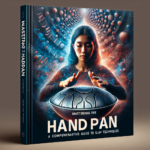Introduction
When the musical world was introduced to the melodic sounds of the Hang, it marked a pivotal moment in the evolution of musical instruments. This creation was none other than the brainchild of Felix Rohner, a Swiss musician turned innovative instrument craftsman. Through a blend of creativity, technical expertise, and a deep understanding of acoustic properties, Rohner has pioneered instruments that transcend traditional musical boundaries.
Early Life and Influences
Born in the heart of Switzerland, Felix Rohner’s journey into the realm of music started at a young age. His early years were marked by an insatiable curiosity for sound and rhythm. Influenced by the natural beauty and cultural heritage of his homeland, Rohner’s quest for sonic exploration began to take shape. Engaging with various musical forms, he developed an appreciation for the confluence of natural and artificial sounds, a theme that would later imbue his groundbreaking creations.
The Birth of the Hang
In the late 1990s, Rohner, in collaboration with his partner Sabina Schärer, embarked on a project that would redefine the musical landscape. They set out to create an instrument capable of producing a harmonious blend of tones. The result was the Hang, a hand-played musical instrument made from two hemispherical steel shells. The unique structure and precise tuning of the Hang allowed it to produce a serene, ethereal sound that resonated with musicians and listeners alike.
The genesis of the Hang was rooted in rigorous experimentation and an innovative approach to acoustics. Rohner and Schärer drew inspiration from various traditional instruments such as the steelpan, gongs, and bells. The Hang’s design incorporates features that optimize its resonant capabilities, producing a mesmerizingly rich tonal palette. This distinctiveness quickly garnered global recognition, propelling Felix Rohner into the spotlight of musical innovation.
Engineering the Sound: Techniques and Materials
The creation of a Hang is an intricate process that involves a delicate balance of art and science. Rohner employs specialized metalwork techniques to shape and tune the instrument. Each steel shell is meticulously hammered and annealed to achieve the desired tonal properties. This handcrafting process ensures that every Hang retains a unique character and resonance.
One of the key innovations by Rohner was the utilization of nitrided steel, a material that increases the durability and stability of the Hang while enhancing its acoustic properties. Nitriding imparts a distinctive texture to the steel, contributing to the instrument’s captivating aesthetics. This blend of material science and artistic craftsmanship exemplifies Rohner’s commitment to pushing the boundaries of traditional instrument-making.
A Global Impact: The Cultural Influence of the Hang
Upon its introduction, the Hang captivated musicians across a myriad of genres, from ambient and electronic music to folk and jazz. Its distinct sound and playability opened up new avenues for creative expression. Artists and performers across the globe began incorporating the Hang into their compositions, further amplifying its cultural footprint.
Moreover, the Hang’s influence extended beyond music. Its meditative and soothing tones found a place in therapeutic and spiritual practices. The instrument’s ability to evoke a sense of tranquility and mindfulness made it a valuable tool in yoga sessions, meditation workshops, and holistic healing practices. This multifaceted impact underscores Rohner’s vision of creating not just an instrument, but a medium for emotional and psychological well-being.
Continual Innovation: Beyond the Hang
The success of the Hang did not mark the end of Rohner’s innovative journey. Instead, it propelled him to explore new avenues within the world of steel instruments. Felix Rohner and Sabina Schärer continued their collaboration under the PANArt brand, where they experimented with various forms and configurations of metal instruments. Their pursuit of acoustic perfection led to the development of the Gubal and other steel instruments that embody similar principles to the Hang but offer distinct tonal and tactile experiences.
This ongoing experimentation reflects Rohner’s philosophy of perpetual innovation and his dedication to the refinement of his creations. Each new instrument is a testament to his unyielding commitment to sculpting sound into novel and captivating forms.
Community and Legacy
Felix Rohner’s contributions to the world of music extend beyond his creations. His work has fostered a global community of musicians and enthusiasts who share a passion for the unique sounds of his instruments. This community serves as a testament to the impactful legacy of Rohner’s innovations, as it continues to grow and evolve, driven by a collective appreciation for the beauty and versatility of steel instruments.
Furthermore, Rohner’s approach to instrument-making emphasizes sustainability and ethical practices. His commitment to using high-quality materials and environmentally conscious methods highlights the broader implications of his work, advocating for responsible artistry in a rapidly changing world.
Conclusion
Felix Rohner’s journey from a curious musician to an acclaimed instrument maker is a narrative of passion, innovation, and artistic excellence. Through the creation of the Hang and subsequent instruments, Rohner has not only expanded the sonic possibilities available to musicians but also enriched the cultural and therapeutic landscapes. His unwavering dedication to craftsmanship and continual exploration has cemented his place as a pioneering force in modern music.
FAQs
-
What is the Hang?
The Hang is a hand-played musical instrument composed of two hemispherical steel shells. It produces a unique, harmonious sound and is celebrated for its meditative and soothing tones.
-
Who invented the Hang?
The Hang was invented by Swiss musicians and instrument makers Felix Rohner and Sabina Schärer in the late 1990s.
-
What materials are used to make the Hang?
The Hang is typically made from nitrided steel, a material chosen for its durability, stability, and enhanced acoustic properties.
-
How is the Hang different from other musical instruments?
The Hang’s unique structure, tuning, and material composition allow it to produce a rich, ethereal sound. Its hand-played design and meditative tones set it apart from many traditional instruments.
-
What other instruments has Felix Rohner developed?
In addition to the Hang, Felix Rohner and Sabina Schärer have developed other steel instruments, such as the Gubal, reflecting their ongoing commitment to acoustic innovation.





